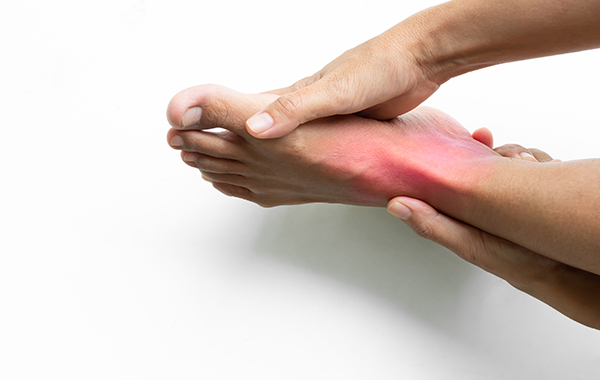Ingrown Toenail Management – Our Method
UNDERSTANDING INGROWN TOENAIL MANAGEMENT
Overview
Ingrown toenails are a common issue in Singapore, affecting both toes and, less commonly, fingers. They occur when the nail grows into the surrounding flesh due to factors like injury, improper trimming, or congenital reasons. Symptoms include pain, redness, swelling, and sometimes pus around the affected nail. Prompt removal of the ingrown spike is crucial to prevent worsening pain and potential infection. Without proper treatment, the condition can lead to persistent discomfort and may not heal on its own.

Why see a podiatrist?

Podiatrists and orthopaedic surgeons specialize in treating ingrown toenails and infections, but their approaches differ. Orthopaedic surgeons often remove the entire nail, while podiatrists focus on removing the part of the nail growing into the skin. Orthopaedic procedures like the Winograd procedure involve removing the nailbed and surrounding tissue, requiring sutures and a longer recovery. Patients with recurrent ingrown toenails may need minor surgery to prevent ongoing issues, especially if they require frequent nail trimming, antibiotics for infections, or experience persistent pain and swelling. Seeking timely intervention can prevent long-term recurrence.
What can a podiatrist do for me?
A podiatrist, specializing in foot care, is trained to treat nail conditions such as infections and ingrown toenails through both conservative and surgical methods.
Our podiatrists are skilled in minimally invasive nail procedures designed to effectively resolve these issues with minimal side effects, a short recovery period, and a low risk of recurrence.
What are the steps?

Addressing ingrown toenails depends on the severity of your case and requires an in-clinic assessment by your podiatrist. If necessary, your podiatrist may recommend a minor surgical procedure to prevent recurrence or infection spread.
Known as partial or total nail avulsion, this procedure involves lifting the ingrown portion of the nail from under the skin’s edge. The affected section is then cut from the nail tip to its root and carefully removed, exposing the nail matrix. An ablative agent is applied to the exposed nail bed to prevent the ingrown toenail from recurring.
Podiatrists specialize in performing precise, delicate procedures, minimizing damage to surrounding areas when addressing ingrown nails. For minor cases or issues stemming from improper nail cutting, non-invasive in-clinic removal techniques can often suffice, avoiding the need for surgical procedures.
After any minor procedures, a wound dressing will be applied and regularly changed to promote healing and minimize the risk of infection following surgery.

Advantages
No stitches, no scars
Swift recovery – less than 2 weeks post-procedure healing
No down time – able to return to daily activities quickly
Low chance of recurring – 2-5% recurrence rate
If an incurvated toenail causes chronic pain and infections, your podiatrist may recommend nail surgery instead of routine nail care to effectively manage the condition. Podiatrists are highly skilled in assessing nail dynamics to predict potential recurrences. For patients with conditions like diabetes, rheumatoid arthritis, or dementia, which can complicate foot health, prompt intervention can prevent extensive costs and long-term complications.
The suitability for minor surgical procedures depends on a comprehensive assessment, considering your health status. To determine if you’re a candidate for ingrown toenail management procedures, consult with one of our podiatrists today.
Book your initial podiatry visit
hello@nofrillspodiatry.com
Phone
9007 1085
Open Hours
Mondays - Sundays: 9am-6pm
We're Here Whenever You Need Us
hello@nofrillspodiatry.com
Contact Us
9007 1085
Open Hours
Monday-Sundays: 10am to 7pm
Address
About
About Us
Symptoms We Help With
FAQs
Careers
Contact Us